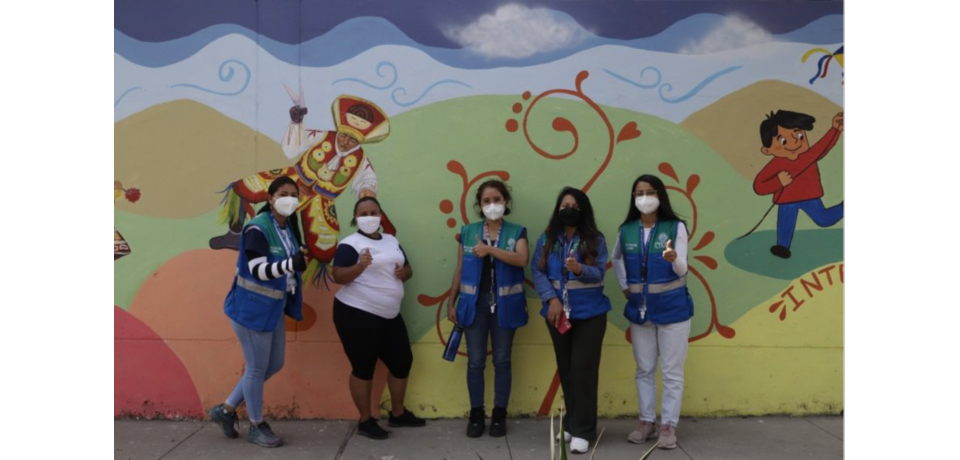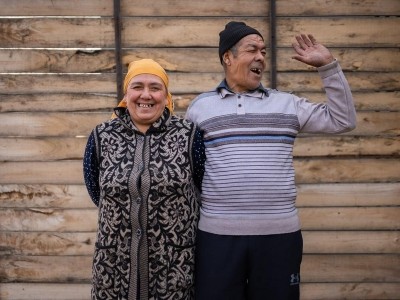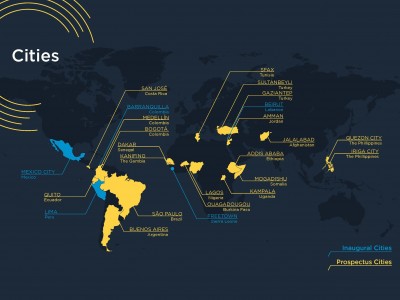Continuing Towards Sustainable Local Human Mobility Management: Socio-economic Integration of the Refugee, Migrant and Host Populations for Recovery from COVID-19 in Peru
Michel Hoffmann, IOM, mhoffmann@iom.int
Giovanna Brazzini, UNDP, giovanna.brazzini@undp.org
Objetivos de Desarrollo Sostenible Relacionados y Objetivos del Pacto Mundial sobre Migración
Resumen
Peru, particularly the area of Metropolitan Lima, has hosted many Venezuelan refugees in the last years. Even though public policies have sought to tackle COVID-19 and socio-economic recovery, they have not always addressed the specific needs of the refugee and migrant population from Venezuela. Since local communities are where people’s daily needs and opportunities are met, there is an ongoing need to continue strengthening local human mobility management through sustainable and inclusive public policies and tools. Additionally, the project sought to continue to empower the refugee and migrant population as well as the entirety of host communities to become active local changemakers through participatory Neighborhood Social Organizations (NSO).
Objetivo clave
Through this Joint Action, IOM and UNDP aspired to strengthen the role and capacities of the Metropolitan Municipality of Lima (MML) to manage local human mobility through inclusive, sustainable public policies, while also contributing to the integration of the refugee, migrant and local populations and maximizing the opportunities that human mobility brings.
Principales actividades
Working alongside local NSOs, IOM and UNDP conducted three main activities:
-
A Human Mobility Plan for the Metropolitan Municipality of Lima (MML), the first of its kind, was developed in a participatory manner and will help guide the MML in its efforts to ensure the socio-economic integration of the refugee, migrant and local populations.
-
29 migrants and 13 residents joined new participatory Neighborhood Social Organizations (NSO). Through NSOs, they acted as local community leaders and agents of change, participating in 4 projects of social cohesion and outreach that reached 490 people from their communities. In addition, 8 NSOs received technical assistance so that they could be registered at the district level, 5 NSOs received goods and seed funds to strengthen their socio-economic integration projects, and 2 NSOs were supported through peer-to-peer learning.
-
3 community spaces and 4 murals conveyed and reinforced messages of social cohesion, cultural inclusion, non-discrimination and reminded community members about the benefits, skills and new perspectives that migrants bring to local communities. Close to 700 people from the local, refugee and migrant population from the Lima area participated in the implementation of these initiatives, which included artistic and creative expressions of welcoming community life.
Éxitos clave o factores innovadores, buenas prácticas y lecciones aprendidas (si están disponibles)
All the activities were implemented successfully despite the COVID-19 pandemic. The Joint Action unified partnership for coordination with key stakeholders such as the local government in Lima (MML) and have sparked motivation to continue actions catalyzed by this initiative. Throughout this initiative, IOM and UNDP contributed to social cohesion in Lima by engaging the local and the migrant communities to work together and build a common space they can all enjoy and use as a place to get to know each other and learn about each other’s cultures.
A joint approach such as this one is integral to achieve the SDGs. It has contributed to the promotion of SDG 5 on gender equality as well as to SDG 8 on decent work and economic growth. The project aims to facilitate orderly, safe, regular and responsible migration and mobility of people through the design of a local migration policy and to promote global partnerships. It therefore also contributes to achieving the Global Compact for Migration's Objectives, such as GCM Objective 6 on facilitating fair and ethical recruitment and safeguard conditions that ensure decent work, GCM Objective 16 on empowering migrants and societies to realize full inclusion and social cohesion and GCM Objective 19 on creating conditions for migrants and diasporas to fully contribute to sustainable development in all countries.
This is the second time Peru and Lima participated in this joint IOM-UNDP seed funding activity. Read more about the activities in Peru in Round 1 of this initiative.
Beneficiarios
Migrants, local communities, local authorities, local NGOs


